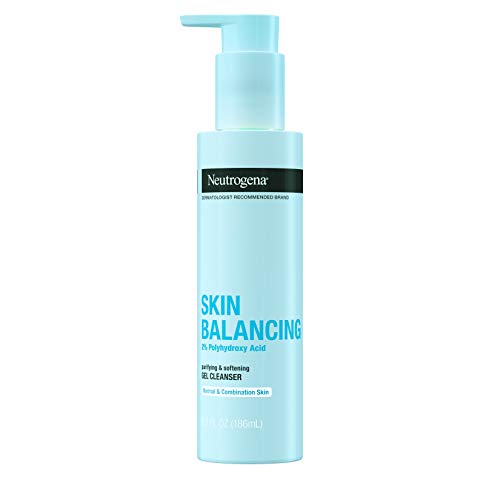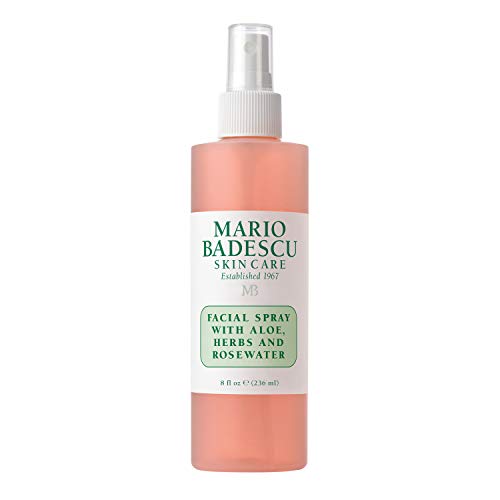
How to Establish a Consistent Face Washing Routine for Combination Skin
This step-by-step guide provides instructions on how to establish a consistent face washing routine specifically designed for combination skin. It offers tips and advice on finding the right products and creating a balanced and healthy complexion.
Top-Rated Face Wash for Combination Skin



Determine Your Skin Type
Before establishing a face washing routine, it’s important to understand your skin type. Follow these steps to determine your skin type:
- Wash your face: Start by cleansing your face with a gentle cleanser to remove any dirt or makeup.
- Wait for an hour: After washing your face, avoid applying any skincare products or makeup for at least an hour.
- Observe your skin: Look closely at your skin and note any signs of oiliness, dryness, or combination.
- Oily skin: If your skin appears shiny all over, particularly in the T-zone (forehead, nose, and chin), you likely have oily skin.
- Dry skin: If your skin feels tight, rough, or flaky, and lacks moisture, you most likely have dry skin.
- Combination skin: If your forehead, nose, and chin appear oily, while your cheeks feel dry, you have combination skin.
- Normal skin: If your skin doesn’t show any extreme signs of oiliness or dryness and feels balanced, you have normal skin.
Knowing your skin type will help you choose the right products and tailor your routine accordingly.


Choose Suitable Cleansers
When it comes to face wash, opt for gentle cleansers that are suitable for combination skin. Look for products that are non-comedogenic, oil-free, and pH-balanced. Avoid harsh cleansers that can strip away natural oils and disrupt the skin’s balance.
To choose a suitable cleanser, firstly, check the label for terms such as “gentle,” “for combination skin,” or “mild.” These indicate that the product is designed to cleanse without irritating or drying out your skin.
Secondly, ensure that the cleanser is non-comedogenic and oil-free. Non-comedogenic cleansers are formulated to prevent clogged pores and the formation of acne. Oil-free cleansers are ideal for combination skin as they won’t leave your T-zone overly oily while ensuring enough hydration for drier areas.
Thirdly, pay attention to the pH balance of the cleanser. Look for a pH-balanced product that matches the natural pH of your skin (around 5.5). This helps maintain your skin’s protective barrier and prevents it from becoming too dry or too oily.
Lastly, avoid cleansers with harsh ingredients such as sulfates, fragrances, or alcohol. These can disrupt the skin’s balance, leading to irritation, dryness, or excessive oil production.
Examples of suitable cleansers for combination skin include:
- Cetaphil Gentle Skin Cleanser: This non-comedogenic and pH-balanced cleanser is gentle enough for daily use and effectively removes impurities without drying out the skin.
- Neutrogena Oil-Free Acne Wash: Specifically formulated for combination skin, this cleanser is oil-free and helps prevent breakouts while maintaining the skin’s moisture balance.
Remember, choosing a suitable cleanser is essential for maintaining healthy and balanced skin. Follow these guidelines and select a product that suits your skin type and concerns to achieve optimal results.
Wash Twice a Day
- Cleanse your face in the morning. Start by wetting your face with lukewarm water. Apply a gentle facial cleanser to your fingertips and massage it onto your face using circular motions. Be sure to cover all areas, including the forehead, nose, cheeks, and chin. Rinse thoroughly with water and pat your face dry with a clean towel.
- Cleanse your face in the evening. Begin by removing any makeup using a gentle makeup remover or micellar water. Next, wet your face with lukewarm water and apply a facial cleanser as mentioned before. Gently massage the cleanser onto your face, paying extra attention to areas prone to dirt and oil buildup. Rinse your face thoroughly with water, ensuring all traces of cleanser and makeup are removed. Finally, pat your face dry with a clean towel.
Remember, consistency is key. By following this routine of washing your face twice a day, you’ll help maintain a healthy and clean complexion, free from impurities and pollutants.



Use Lukewarm Water
When washing your face, start by wetting your skin with lukewarm water. Gently massage your facial cleanser onto your skin using circular motions. Rinse off the cleanser thoroughly with lukewarm water. Avoid the temptation to use hot water, as it can strip away the natural moisture of your skin. Similarly, cold water can cause your pores to constrict. By using lukewarm water, you can maintain your skin’s natural balance and keep it healthy and hydrated.
Gently Massage the Cleanser
Gently Massage the Cleanser
To properly cleanse your face, follow these steps:
- Dampen your face with lukewarm water.
- Apply a small amount of cleanser (about a pea-sized) to your fingertips.
- Using gentle, circular motions, massage the cleanser onto your face, focusing on the oily areas.
- Be careful not to scrub too harshly as this can irritate the skin.
- Pay extra attention to areas with excess oil or dirt buildup.
- Take care to be gentle on dry or sensitive areas of your face.
- Continue massaging the cleanser for about 30 seconds to one minute.
- Rinse your face thoroughly with lukewarm water, ensuring that all traces of cleanser are removed.
- Pat your face dry with a clean towel.
- Follow up with your preferred toner, moisturizer, or other skincare products.
Remember, the key is to be gentle and avoid excessive scrubbing. By following these steps, you will effectively clean your face without causing any irritation.



Rinse Thoroughly
- After massaging the cleanser onto your face, it is crucial to rinse thoroughly with lukewarm water.
- Ensure that you remove all traces of the cleanser to prevent any residue from clogging your pores or causing dryness.
- Take the time to carefully wash off the cleanser, making sure every area of your face is thoroughly rinsed.
- Use lukewarm water as hot water can strip your skin of its natural oils and cold water may not effectively remove the cleanser.
- Gently splash the water onto your face, or alternatively, use a clean soft cloth or sponge to wipe away the cleanser.
- Continue rinsing until you no longer feel any residue on your skin, ensuring a clean and fresh result.
Pat Dry with a Clean Towel
- Rinse your face thoroughly with water.
- Take a clean towel and gently pat your face dry.
- Avoid rubbing your face vigorously to prevent irritation.
- Remember to pat, not rub, to retain moisture on your skin.
- This method is especially beneficial for combination skin.
Apply Toner and Moisturizer
- Wash your face with a gentle cleanser and pat dry with a clean towel.
- Saturate a cotton pad with toner and gently swipe it across your face, avoiding the eye area.
- Allow the toner to dry naturally, without rubbing or rinsing it off.
- Take a small amount of lightweight moisturizer onto your fingertips.
- Apply the moisturizer to your face, using upward circular motions.
- Pay extra attention to dry areas or areas prone to flakiness.
- Allow the moisturizer to absorb into your skin before applying any makeup or sunscreen.
Use Weekly Exfoliation and Masks
Weekly Exfoliation:
- Choose an exfoliator: Select a gentle exfoliator that suits your skin type. Look for ingredients like salicylic acid for acne-prone skin, glycolic acid for dull skin, or enzymes for sensitive skin.
- Cleanse your face: Start by cleansing your face with a mild cleanser to remove any dirt or makeup. Pat your skin dry with a clean towel.
- Apply the exfoliator: Take a small amount of the exfoliator and gently massage it onto your damp face using circular motions. Avoid the delicate eye area.
- Rinse off: After 2-3 minutes of massaging, rinse off the exfoliator with lukewarm water. Make sure to remove all traces of the product.
- Moisturize: Finish off by applying a moisturizer to hydrate your skin. This will help replenish any moisture lost during exfoliation.
Weekly Masks:
- Choose a mask: Pick a mask that addresses your specific skin concerns. Opt for a hydrating mask if your skin feels dry, a clay mask for oily or acne-prone skin, or a brightening mask for dull skin.
- Cleanse your face: Start with a clean, dry face. Gently cleanse your skin to remove any impurities and pat dry.
- Apply the mask: Use a brush or your fingertips to apply an even layer of the mask to your face, avoiding the eye and lip areas.
- Relax: Allow the mask to sit on your skin for the recommended time specified on the packaging. Take this opportunity to relax and unwind.
- Rinse off: After the specified time, rinse off the mask with lukewarm water. Use gentle circular motions to remove any residue.
- Follow up: Apply your regular skincare routine, including toner, serum, and moisturizer, to seal in the benefits of the mask.
Remember, consistency is key when incorporating weekly exfoliation and masks into your skincare routine. Adjust the frequency and type of exfoliation or mask based on your skin’s needs and sensitivity.
Achieve Clear and Balanced Skin
In conclusion, following a consistent face washing routine tailored to combination skin can greatly improve the overall health and appearance of your skin. By understanding your skin type and using appropriate products, you can achieve a clear and radiant complexion. Remember to be diligent and patient with your routine, as long-term results require consistent effort.
Necessary Supplies






Skincare Secrets
Streamline Your Skincare Routine #Shorts
Steps for using face wash for combination skin
- Wet your face with warm water
- Take a small amount of the face wash and gently massage it onto your face using circular motions
- Pay extra attention to the areas that tend to be oilier, such as the T-zone (forehead, nose, and chin)
- Rinse off the face wash with lukewarm water, ensuring that all product is thoroughly removed
- Pat your face dry with a clean towel, avoiding any harsh rubbing or pulling on the skin

Hey, I’m Ava Wilson—a skincare enthusiast and a certified esthetician. I’m dedicated to sharing my knowledge and empowering others to achieve healthy, glowing skin through simple, effective routines and natural remedies. Join me on this exciting skincare journey, and let’s unlock your skin’s potential for a confident, beautiful you.





